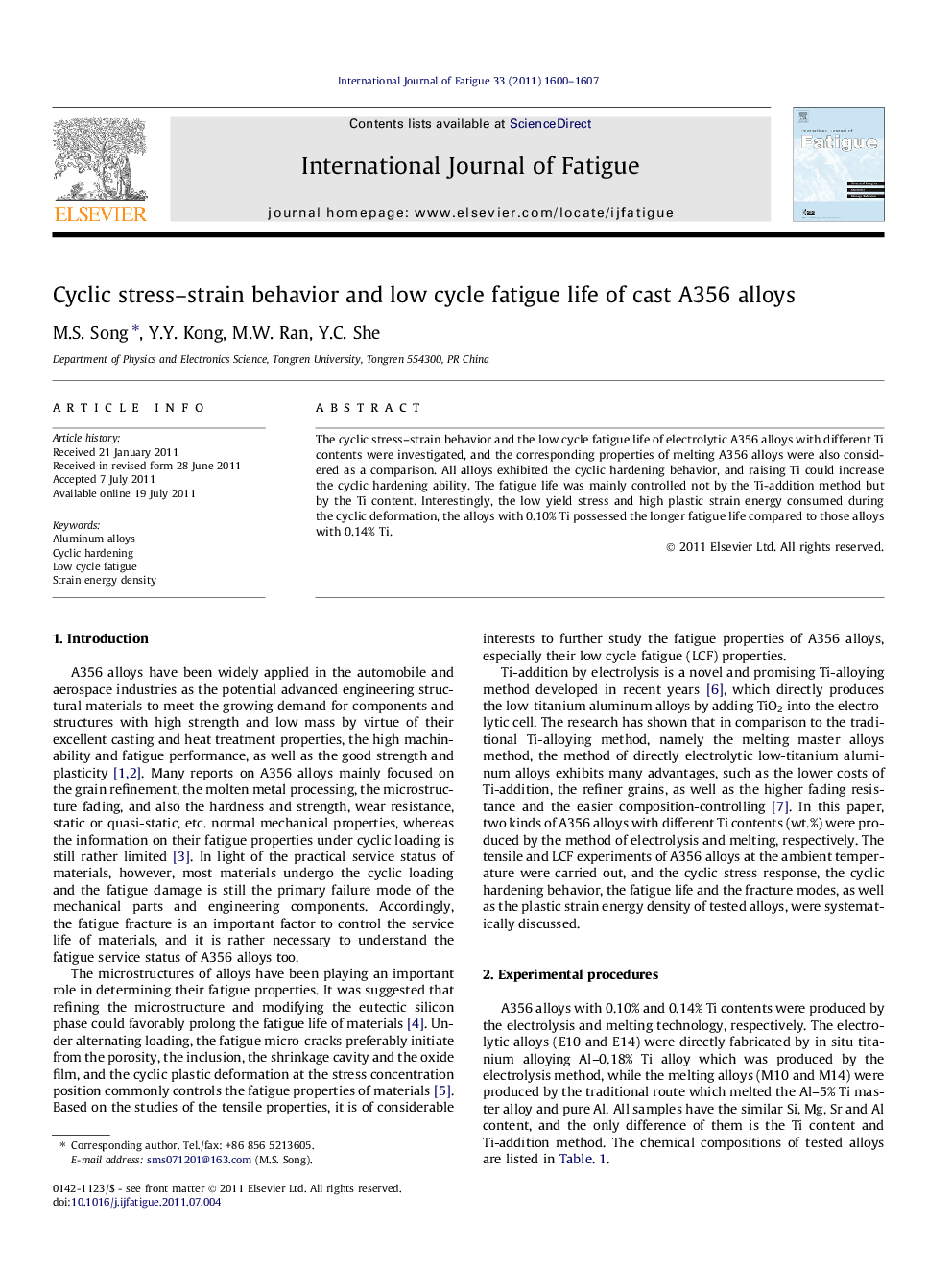| Article ID | Journal | Published Year | Pages | File Type |
|---|---|---|---|---|
| 777798 | International Journal of Fatigue | 2011 | 8 Pages |
The cyclic stress–strain behavior and the low cycle fatigue life of electrolytic A356 alloys with different Ti contents were investigated, and the corresponding properties of melting A356 alloys were also considered as a comparison. All alloys exhibited the cyclic hardening behavior, and raising Ti could increase the cyclic hardening ability. The fatigue life was mainly controlled not by the Ti-addition method but by the Ti content. Interestingly, the low yield stress and high plastic strain energy consumed during the cyclic deformation, the alloys with 0.10% Ti possessed the longer fatigue life compared to those alloys with 0.14% Ti.
Graphical abstractThe low cycle fatigue (LCF) life of A356 casting alloys with different Ti contents and Ti-addition methods were investigated. The cyclic Δɛ/2–2Nf plots of four tested A356 alloys reveal whether Ti-addition by electrolysis or by melting, LCF life of alloys with 0.10% Ti is longer than those of alloys with 0.14% Ti..Figure optionsDownload full-size imageDownload as PowerPoint slideHighlights► All tested A356 alloys showed the evident cyclic hardening behavior. ► Alloys with low Ti exhibited a longer LCF life due to the lower yield stress. ► The plastic strain energy played an important role in deciding the LCF life of A356. ► At low strain, the fatigue striations were observed on the fracture surfaces.
